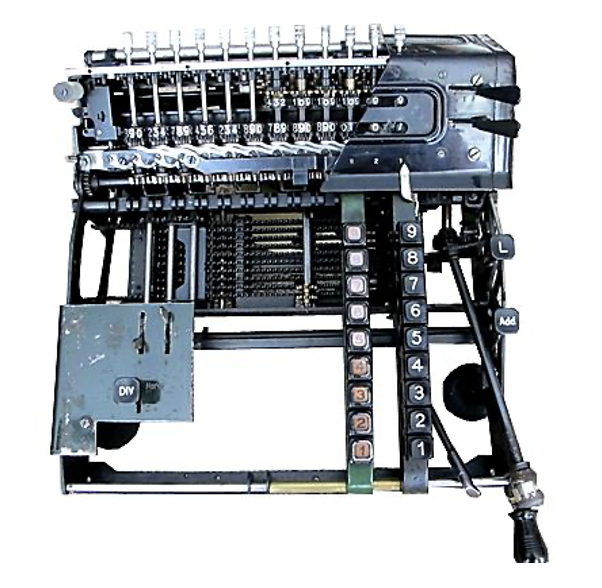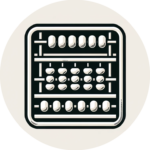MERCEDES, 1934
Inventor
Christel HAMANN for the transfer mechanism
Invention date
1910
Manufacturing date:
1934
Manufacturing location
Germany
Manufacturer
Mercedes Euklid
Dimensions
L 30 H 16 W 36
Reference Number
221

History and Functionality
This machine performs the four operations.
The transfer mechanism is another version of the variable pawl transfer system. It was also invented by Christel HAMANN in 1910 for MERCEDES EUKLID.
The operating principle is based on having 9 parallel toothed rods driven by a single lever perpendicular to their direction. They are articulated at distances such that when the first toothed rod advances one tooth, the second advances two, etc…
A digit set in the setting mechanism engages a cogwheel on the appropriate toothed rod.
Sliding the movable carriage is simply done by pressing a button, thus avoiding many errors.
This machine makes automatic divisions without requiring special attention by the operator.
The same machine can be electrified, the crank being replaced by a contact activating the motor.
This machine is presented in the form of a cut model and was intended for the training of technicians.
About The Inventor
Christel Hamann was a prominent German inventor and engineer, known for his significant contributions to the development of mechanical calculators, including the “Hamann Automat” in 1925. Born in 1870 in Hammelwarden, Germany, Hamann was inspired by his father’s friends to study mechanics and constructions of calculating machines.
In 1896, Hamann established his own institute in Berlin—the Mathematical-Mechanical Institute in Berlin-Friedenau. Initially, he focused on the construction of geodetic and mathematical instruments, receiving a gold medal at the 1900 World Exhibition in Paris for his work. However, in the early 1900s, Hamann decided to concentrate on developing calculating machines. He started developing calculators in 1898, initially experimenting with the construction of Selling and later adopting the stepped drum of Leibniz to develop the “Gauss” and “Berolina” calculators. In 1903, he designed a proportional system of levers, later used in the “Mercedes Euklid” calculator.
Hamann’s talent for invention was further demonstrated in 1909 when he constructed a differential engine used for calculating logarithmic-trigonometrical tables. This machine was developed to assist astronomers Julius Bauschinger and Jean Peters from the Royal Prussian Academy of Sciences in Berlin, who needed an automatic calculator for their work.
After World War I, Hamann worked for Berliner Deutschen Telephonwerke- und Kabelindustrie AG in Berlin, where he developed the “Hamann Manus” calculator in 1925. This machine was equipped with a new type of calculating mechanism called Schaltklinke (switching-latch-wheel), which allowed automatic division for the first time. Hamann continued to innovate, developing electric drive models like the “Hamann Automat V” and the “Hamann Selecta”. In 1933, he was appointed as an honorary doctor of the Technical University of Berlin (TH Berlin).
Christel Hamann passed away on June 9, 1948, in Berlin, leaving behind a legacy of significant advancements in the field of mechanical calculators

